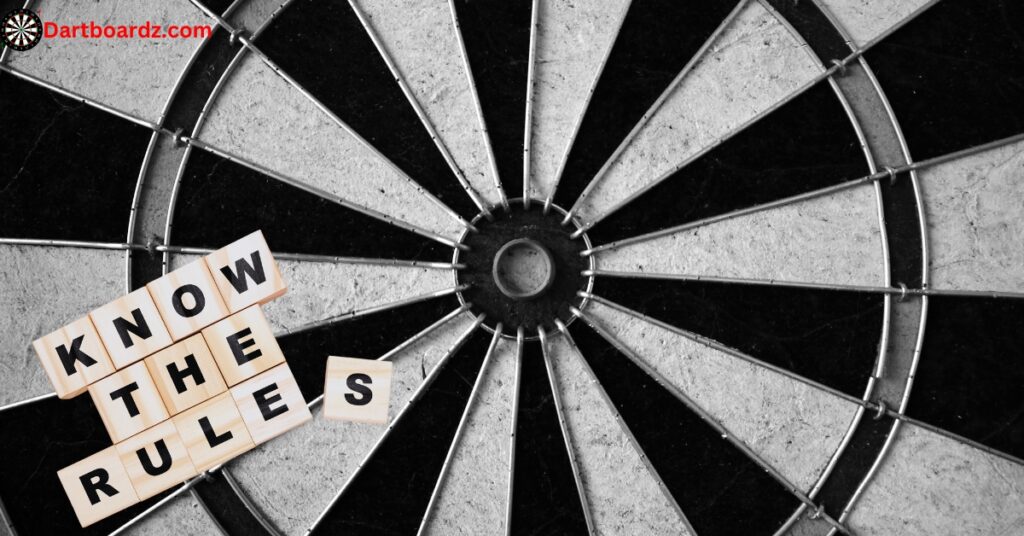In the realm of leisure sports, darts stands out as a game of both skill and camaraderie. Yet, beneath its seemingly simple surface lies a world of intricate rules and strategies that can confound even the most seasoned players.
In this comprehensive guide, we will dissect the essential components of dartboard rules, offering invaluable insights and expert tips to help you navigate this beloved pastime with confidence and finesse.
Understanding the Basics
At the heart of every dartboard lies a meticulously designed playing field, meticulously engineered to challenge and entertain players of all skill levels. The standard dartboard comprises 20 numbered segments, each accompanied by its own unique point value, ranging from 1 to 20.
Surrounding these segments are two concentric circles—the outer ring, known as the double ring, and the inner ring, known as the triple ring—each capable of doubling or tripling the score of a dart that lands within its bounds.
To the uninitiated, the dartboard may appear as nothing more than a haphazard arrangement of numbers and lines. However, a deeper understanding reveals a symphony of precision and strategy, where every throw is a calculated maneuver aimed at maximizing point potential while minimizing risk.
Types of Dart Games
While the traditional image of darts may evoke dimly lit pubs and friendly competition, the world of dart games extends far beyond the confines of a single establishment. From the classic allure of 501 to the strategic depth of Cricket, dart enthusiasts are spoiled for choice when it comes to game selection.
In 501, players must race to reduce their score from an initial total of 501 to precisely zero, all while navigating a labyrinth of point values and strategic opportunities.
Meanwhile, Cricket challenges players to target specific numbers on the dartboard, seeking to “close” them out before their opponents can do the same—a game of wits and precision that rewards both foresight and accuracy.

Common Dartboard Rules
As with any sport, mastery of the game begins with a firm grasp of its rules and regulations. In the realm of darts, adherence to these rules is not only a matter of sportsmanship but also a testament to one’s dedication to the craft.
Central to dartboard rules is the concept of player rotation, wherein participants take turns throwing their darts in a predetermined sequence. Understanding the intricacies of this rotation—such as when to yield the floor to a fellow player or how to resolve disputes over scoring—can mean the difference between victory and defeat in the heat of competition.
Moreover, a comprehensive understanding of scoring mechanics is essential for any aspiring dart player. From the precise calculation of points to the nuanced interpretation of bounce-outs and deflections, mastery of these fundamentals is the cornerstone upon which all successful dart careers are built.
To delve deeper into scoring mechanics and other key rules of the American dartboard game, explore our comprehensive guide on American Dartboard Game Rules.
Advanced Strategies and Techniques
Beyond the realm of rules and regulations lies a realm of endless possibility—a realm where intuition and ingenuity reign supreme. For those seeking to elevate their dart game to new heights, the pursuit of advanced strategies and techniques is both a challenge and a reward unto itself.
One such technique is the art of precision throwing, wherein players aim not only to hit their intended targets but also to do so with pinpoint accuracy. By honing their ability to control both the speed and trajectory of their throws, players can achieve levels of consistency that border on the miraculous.
Additionally, the strategic use of dart selection can provide players with a competitive edge in even the most heated of contests. Whether opting for lightweight darts for increased velocity or heavier darts for enhanced stability, the savvy player understands that every decision carries with it the potential for victory or defeat.

Etiquette and Sportsmanship
At its core, darts is not merely a game of skill but also a celebration of camaraderie and mutual respect. As such, adherence to proper etiquette and sportsmanship is paramount for players of all levels, ensuring an atmosphere of goodwill and mutual admiration.
Central to this ethos is the concept of fair play, wherein participants treat both their opponents and the game itself with the utmost respect. This includes waiting patiently for one’s turn, refraining from disruptive behavior, and graciously acknowledging the achievements of others, regardless of the outcome.
Moreover, the importance of sportsmanship extends beyond the confines of the dartboard, permeating every aspect of the player’s life. By embodying the values of integrity, humility, and generosity, players can not only elevate their own experience but also serve as beacons of inspiration for those around them.

Conclusion
In the grand tapestry of leisure sports, few pursuits offer the same blend of challenge, excitement, and camaraderie as darts. From its humble origins in the taverns of yesteryear to its modern incarnation as a global phenomenon, darts has remained a timeless testament to the indomitable spirit of human competition.
As you embark on your own journey of dartboard mastery, remember that the path ahead is fraught with challenges and opportunities in equal measure.
Yet, armed with the knowledge and wisdom gleaned from this guide, you can approach each throw with confidence and determination, secure in the knowledge that victory awaits those who dare to seize it. So pick up your darts, take aim at greatness, and let the games begin!
. What are the basic components of a dartboard?
A standard dartboard consists of 20 numbered segments, a bullseye, and two concentric circles—the outer double ring and the inner triple ring—which multiply the score of darts that land within them.
What are some popular dart games and their rules?
Popular dart games include 501, Cricket, and Around the Clock. In 501, players race to reduce their score from 501 to zero. In Cricket, players aim to “close out” specific numbers on the dartboard. Around the Clock requires players to hit each number on the board in sequential order.
How do I determine scoring in darts?
Scoring in darts is based on the number values assigned to each segment of the dartboard rules. Players accumulate points based on where their darts land, with higher point values awarded for hits within the inner rings.
What are some common rules to follow during game play?
Common rules include taking turns in a predetermined order, accurately tallying scores, and resolving disputes courteously. It’s also important to abide by etiquette and display good sportsmanship throughout the game.
How can I improve my dart game?
Improving your dart game involves practicing regularly, honing your throwing technique, and familiarizing yourself with different strategies and game formats. Consistency, focus, and dedication are key to mastering the art of darts.




